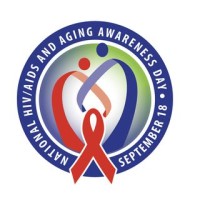Did you know that SAGE created the first HIV/AIDS support group for older adults? In honor of National Gay Men’s HIV Awareness Day, we’re reposting this blog from SAGE about the ways they’re working to improve the quality of life for our LGBT elders with HIV. More information is also available on the Diverse Elders Coalition’s HIV and Aging webpage.
 From establishing America’s first HIV/AIDS support group for older adults, to igniting changes in national policy, Services and Advocacy for GLBT Elders (SAGE) leads the fight against this epidemic in the aging community. On this National HIV/Aging Awareness Day, 50% of Americans living with HIV will be over 50. With graying demographics—and adults over 50 accounting for one in six new diagnoses—that number is projected to soar to 70% in 2020. As ACRIA’s research shows, older adults with HIV have higher rates of depression, struggle with more comorbidities, and lack robust support networks to enable them to age in place with dignity and respect. Social isolation, higher rates of poverty, and a lack of access to culturally competent healthcare compound the problem. What is most upsetting about these age-related disparities? HIV-positive older adults are more likely to be diagnosed later, too often when the virus has progressed to AIDS.
From establishing America’s first HIV/AIDS support group for older adults, to igniting changes in national policy, Services and Advocacy for GLBT Elders (SAGE) leads the fight against this epidemic in the aging community. On this National HIV/Aging Awareness Day, 50% of Americans living with HIV will be over 50. With graying demographics—and adults over 50 accounting for one in six new diagnoses—that number is projected to soar to 70% in 2020. As ACRIA’s research shows, older adults with HIV have higher rates of depression, struggle with more comorbidities, and lack robust support networks to enable them to age in place with dignity and respect. Social isolation, higher rates of poverty, and a lack of access to culturally competent healthcare compound the problem. What is most upsetting about these age-related disparities? HIV-positive older adults are more likely to be diagnosed later, too often when the virus has progressed to AIDS.
The Administration on Aging released its Older Adults and HIV/AIDS Toolkit in 2011 to help service providers educate their constituents about HIV prevention and care management. To our disappointment, the federal government has not taken further action to improve policies, services, and education surrounding this issue. The White House recently held its annual White House Conference on Aging, a unique opportunity to explore what we have accomplished in federal aging policy over the past decade, and where we hope to go within the next ten years. The conference issued four policy briefs, including one on Healthy Aging. How many times is HIV/AIDS mentioned? Not once. In fact, the entire website has only one blog post touching on the issue.
What more can the federal government do to help older Americans? Our recommendations: (1) expand care, services and support for older adults living with HIV/AIDS; (2) initiate new research; (3) revise testing guidelines; and (4) improve data collection. What are some concrete examples of actions the federal government can take? One easy example: the U.S. Preventive Services Task Force’s (USPSTF) recommendation on routine HIV testing, which currently cuts off at age 65. Testing has been shown to be life-saving and cost-effective well beyond that age, and USPSTF should amend this policy to include individuals 65 and over. Another easy example: targeted prevention campaigns. ACRIA’s Age is Not a Condom campaign provides a great example of what the federal government could do. The Centers for Disease Control (CDC) should develop prevention campaigns and other interventions targeting older adults.
In the coming months, SAGE, ACRIA, and the American Psychological Association will work with the Office of National AIDS Policy to implement its updated National HIV/AIDS Strategy. Throughout this initiative—as well as those directed by the CDC and other federal bodies—we will fight for policies that are inclusive of older adults.
The opinions expressed in this article are those of the author and do not necessarily reflect those of the Diverse Elders Coalition.

